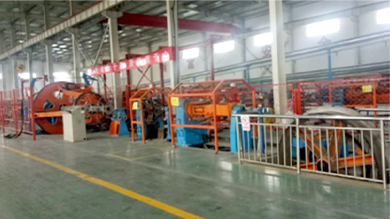10 月 . 14, 2024 04:16 Back to list
EPDM Lined Butterfly Valves for Enhanced Sealing and Durability in Fluid Control Applications
Understanding EPDM Lined Butterfly Valves An Insight into Their Functionality and Applications
EPDM lined butterfly valves are a vital component in various industrial applications, providing crucial functionality in controlling the flow of fluids. The abbreviation EPDM stands for Ethylene Propylene Diene Monomer, a type of synthetic rubber known for its outstanding durability and resistance to various environmental factors, making it an ideal choice for valves used in demanding settings. This article delves into the characteristics, benefits, design, and applications of EPDM lined butterfly valves.
Characteristics of EPDM Lined Butterfly Valves
Butterfly valves consist of a circular disc that rotates around a central axis to control the flow of fluids through a pipeline. The lining of these valves with EPDM rubber enhances their performance, particularly in applications involving water and other moderately aggressive media. One significant feature of EPDM is its high resistance to heat, ultraviolet (UV) light, ozone, and extreme weather, which extends the valve's lifespan in outdoor environments.
The construction of EPDM lined butterfly valves usually includes a metal body, frequently made from ductile iron or stainless steel, which provides structural integrity. The EPDM lining serves as a sealing surface, preventing leaks and minimizing wear on the valve's internal parts. Additionally, the design allows for a lightweight and compact structure, which eases installation and reduces costs.
Benefits of EPDM Lined Butterfly Valves
1. Corrosion Resistance One of the most significant advantages of EPDM lined butterfly valves is their exceptional resistance to corrosion and chemicals. This property is crucial in industries such as water treatment and chemical processing, where valves often come into contact with harsh substances.
2. Temperature Range EPDM materials can withstand a wide range of temperatures, typically from -40°F to 250°F (-40°C to 121°C). Such durability ensures that these valves maintain their performance even under extreme conditions.
3. Low Pressure Drop The design of butterfly valves generally allows for a low-pressure drop across the valve, which translates into energy savings when moving fluids through piping systems. This efficiency is particularly important in large-scale operations.
4. Ease of Operation With their quarter-turn operation, EPDM lined butterfly valves are easy to handle. They can be operated manually or automatically, providing versatile options for different industrial settings.
epdm lined butterfly valves

Applications of EPDM Lined Butterfly Valves
EPDM lined butterfly valves find applications across various sectors, including
- Water Treatment Facilities These valves are commonly used in water distribution systems, irrigation, and wastewater management, where their resistance to corrosion and chemical attack is essential.
- Food and Beverage Industry In this sector, hygiene is paramount, and EPDM-lined valves are favored for their ability to maintain sanitary conditions while resisting contaminants.
- Chemical Processing Industries dealing with various chemicals benefit from the EPDM lining, which withstands harsh environments and ensures safe and efficient pollutant management.
- Power Generation In power plants, these valves control the flow of steam, water, and cooling fluids, thus playing a crucial role in maintaining energy efficiency.
- HVAC Systems EPDM lined butterfly valves are used in heating, ventilation, and air conditioning applications for effective flow control and energy management.
Conclusion
EPDM lined butterfly valves offer a blend of durability, efficiency, and cost-effectiveness that makes them indispensable in numerous industrial applications. Their ability to resist harsh conditions, coupled with ease of operation and maintenance, positions them as a preferred choice for engineers and facility managers alike. As industries continue to evolve and demand more reliable and efficient fluid control solutions, EPDM lined butterfly valves will undoubtedly remain at the forefront of innovation and application.
Share
-
Understanding the Differences Between Wafer Type Butterfly Valve and Lugged Butterfly ValveNewsOct.25,2024
-
The Efficiency of Wafer Type Butterfly Valve and Lugged Butterfly ValveNewsOct.25,2024
-
The Ultimate Guide to Industrial Swing Check Valve: Performance, Installation, and MaintenanceNewsOct.25,2024
-
Superior Performance with Industrial Swing Check Valve: The Essential Valve for Any SystemNewsOct.25,2024
-
Industrial Swing Check Valve: The Ideal Solution for Flow ControlNewsOct.25,2024
-
You Need to Know About Industrial Swing Check Valve: Functionality, Scope, and PerformanceNewsOct.25,2024